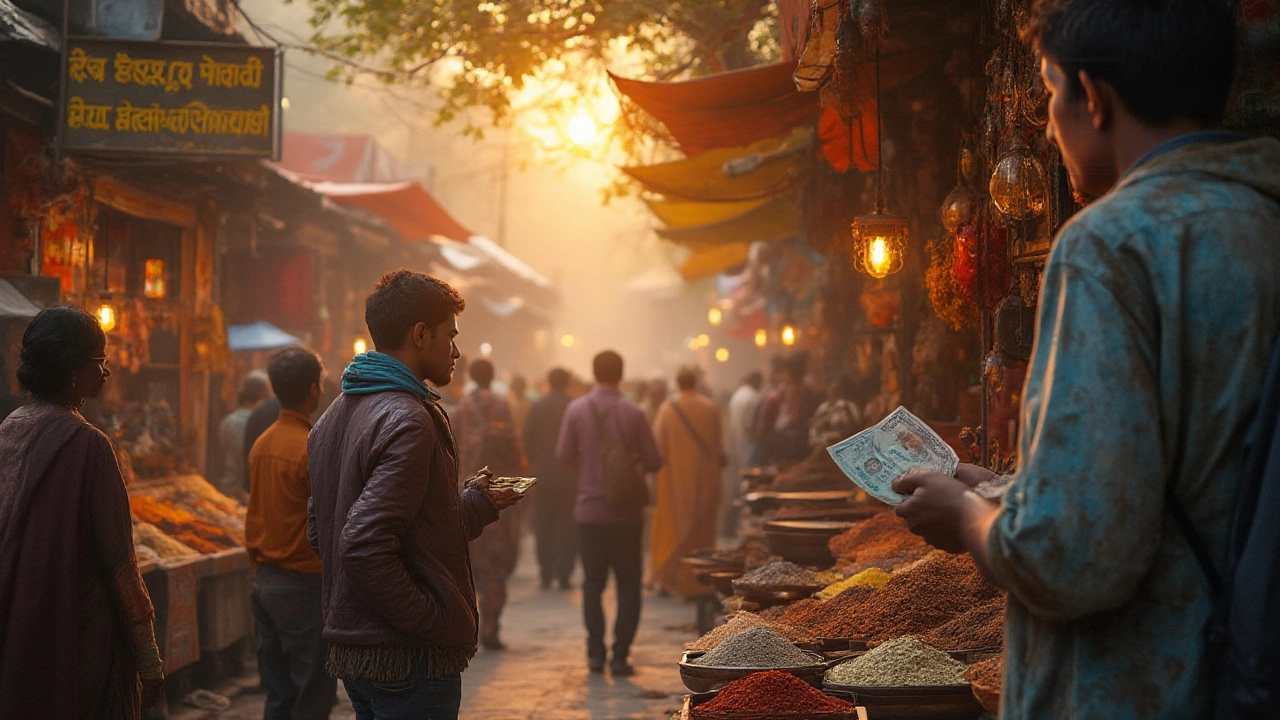Exchange Rate India: What You Need to Know Before Traveling
When you’re planning a trip to India, the exchange rate India, the value of the Indian rupee compared to other currencies like the US dollar or euro. Also known as INR exchange rate, it directly affects how far your money goes on jungle camps, temple visits, or train rides across the country. A small shift in this rate can mean the difference between a luxury stay and a budget-friendly stay. If you’re coming from the U.S., Canada, or Europe, you’ll be dealing mostly with USD to INR or EUR to INR conversions—and getting this right saves you hundreds.
Most travelers make the mistake of exchanging cash at airports or hotels, where rates are terrible and fees are hidden. The real savings come from using local ATMs with no foreign transaction fees or visiting authorized money changers in city centers like Delhi, Mumbai, or Goa. Many banks in India now offer competitive rates, and some even let you order INR online before you land. Keep in mind that the Indian rupee, the official currency of India, used in all tourist areas, markets, and jungle camps isn’t freely convertible outside the country, so don’t try to buy it before you arrive unless you’re using a specialized service.
Don’t forget to check the USD to INR, the most commonly tracked currency pair for international travelers to India rate a day before you travel. It changes daily based on global markets, but it rarely swings more than 2-3% in a week. Use apps like XE or Google Finance to track it—no need to guess. Also, avoid street money changers, even if they offer "better rates." They often slip in fake bills or shortchange you. Stick to banks or RBI-approved counters with visible rate boards.
If you’re heading to remote jungle camps or small towns, carry enough cash. Cards don’t always work, and ATMs can run out. Most places accept rupees only—no dollars, no euros. You’ll pay for your safari, your guide, your meals, even your temple entry fees in INR. That’s why knowing the current rate helps you budget smarter. For example, if 1 USD = 83 INR, a ₹1,500 dinner is about $18. If it drops to 85, that same meal becomes $17.65. Small changes add up over a two-week trip.
You’ll also notice that prices in India are often listed in rupees, but tour operators and hotels sometimes quote in USD for foreign guests. Always ask: "Is this price in INR or USD?" Some try to lock you into an old, unfavorable rate. If you’re booking a multi-day trek or a heritage tour, ask if the price is fixed or subject to exchange rate changes. Most reputable companies, like Wild Retreats, lock in rates at booking to protect you from sudden swings.
And here’s something most guides don’t tell you: carrying small denomination notes—₹100, ₹200, ₹500—is a game-changer. Vendors, auto drivers, temple donation boxes, and even your camp staff appreciate it. Large notes like ₹2,000 can be hard to break, especially outside big cities. Keep a stash of small bills handy.
By the time you land, you’ll know exactly how much to carry, where to swap it, and how to stretch it. Whether you’re trekking the Great Himalayan Trail, visiting the Taj Mahal, or relaxing on Goa’s beaches, the right money strategy means more experiences and fewer headaches. Below, you’ll find real traveler tips on saving money, staying safe with cash, and making the most of your budget in India—no fluff, just what works.
